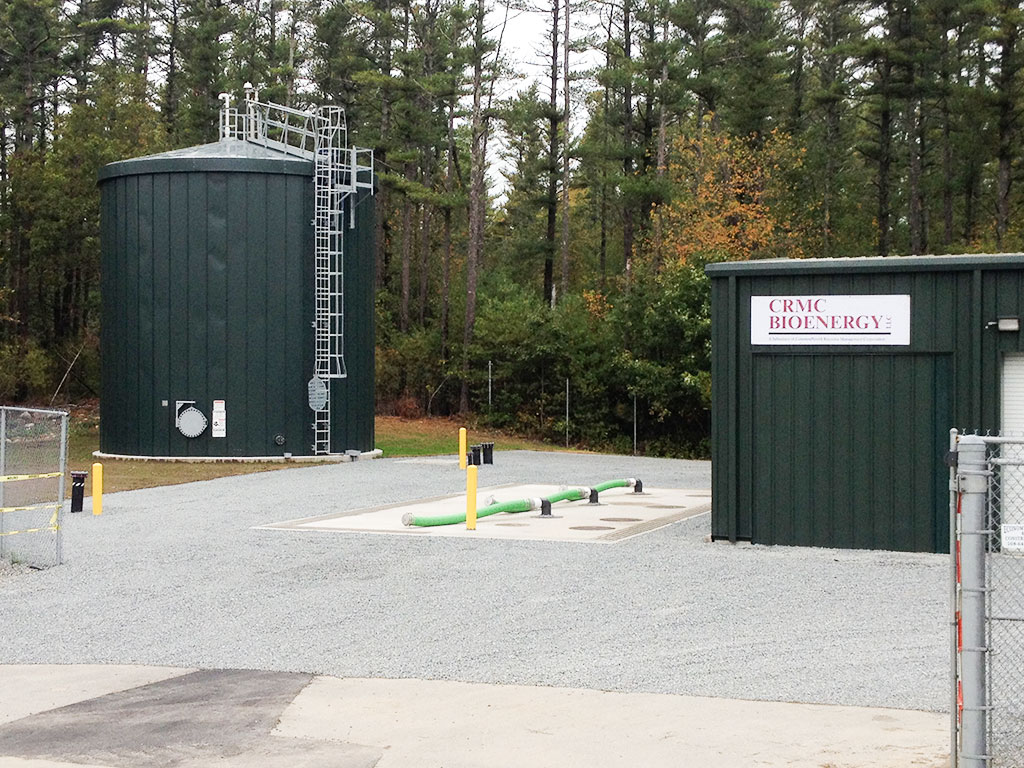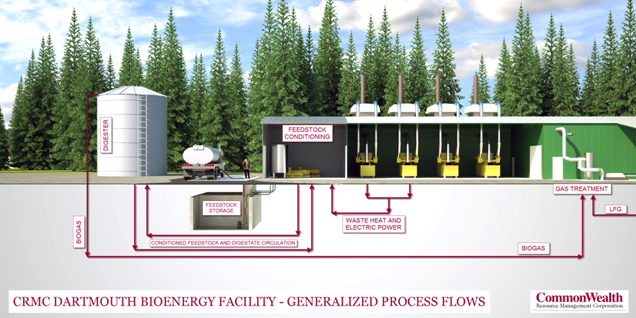CRMC Bioenergy: Producing Bio-gas by Anaerobic Digestion of Liquid Organic Wastes


The AD Project generates bio-gas from anaerobic digestion of liquid organic wastes in a 100,000-gallon digester tank. The digestion facility is located adjacent to the Crapo Hill Landfill in Dartmouth, MA, on a portion of the site leased to CNBE for the LFG Project. The AD Project is owned by CRMC Bioenergy, LLC, a special-purpose entity that is solely owned by CommonWealth.
The AD Project accepts liquid wastes that have included dairy product waste, fermentation process waste, other food process waste, compost facility “tea” and pumpable biosolids from wastewater treatment plants. Liquid wastes are off-loaded from tanker trucks into any of three feedstock storage tanks, combined in a mixing tank, then injected into the digestion tank. The injection process provides hydraulic mixing of the tank contents. Tank temperature is maintained by pre-heating feedstock with waste heat recovered from engine jacket water or, as appropriate, by using a radiator to pre-cool the feedstock.
Active bugs in the tank convert the organic material to bio-gas, which typically consists of 55% to 70% methane, the balance being predominantly carbon dioxide. The bio-gas is piped to be mixed with the landfill gas upstream of the sulfur removal system for delivery to the engine-generator sets, where the mixture is combusted to generate electricity. Although bio-gas and landfill gas have different compositions, the engine controls and air-to-fuel ratio controller support efficient combustion and act to minimize emissions.

Residual liquids from the digestion tank are pumped to a fourth storage tank, then either (i) returned to the landfill to stimulate additional generation of gas for collection; of (ii) discharged to the sewer.
The AD Project achieved commercial operation in November 2014. Construction was supported in part by a loan from the Massachusetts Business Development Corporation and by grants from the Massachusetts Department of Environmental Protection and the Rural Development Authority of the US Department of Agriculture.
Environmental benefits of the AD Project include the following:
- Collects and destroys methane generated by liquid organic wastes.
- Provides a local outlet for management of liquid organic wastes other than a landfill or incinerator, thereby avoiding air emissions that would otherwise occur.
- Supports generation and collection of additional landfill gas from the landfill.